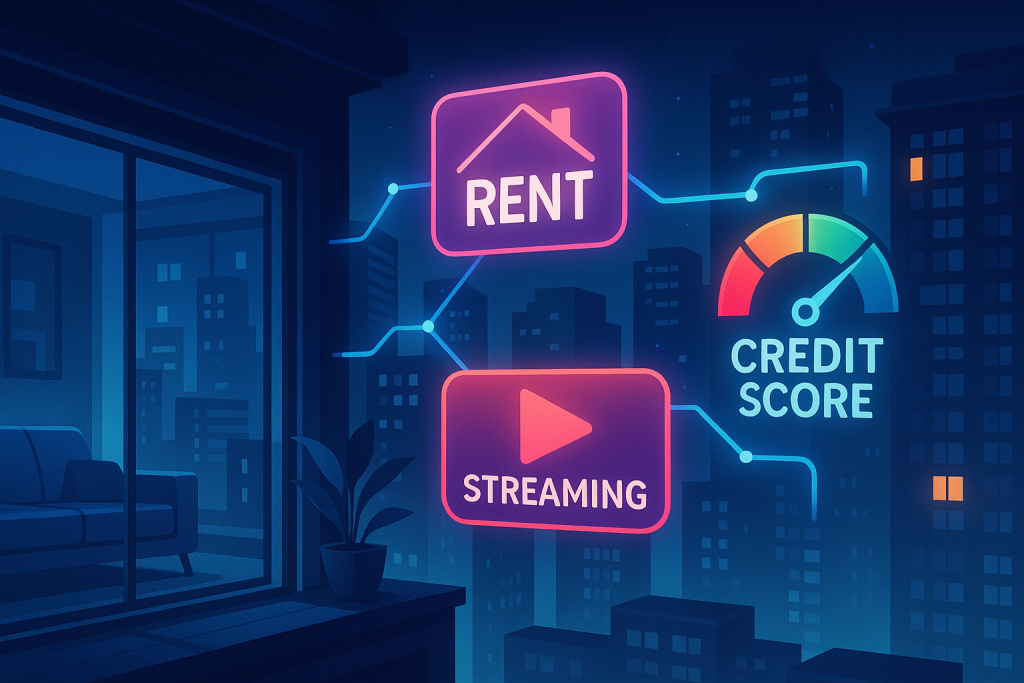In recent years, alternative credit has become an essential tool in the financial landscape of the United States. Traditional credit scoring systems have long overlooked significant aspects of a person’s financial reliability, such as rent and streaming payment history.
However, innovative approaches are now incorporating these elements into credit evaluations, providing a more comprehensive picture of an individual’s financial behavior. By expanding the traditional parameters of credit assessment, these new methods aim to open doors to individuals who may have been previously excluded from mainstream financial services.
Integrating rental payments into credit assessments

One significant change in the realm of alternative credit involves the consideration of rental payments as part of the credit evaluation process. Historically, timely rent payments were seldom factored into credit scores, even though they represent a significant monthly financial commitment for many individuals.
When rental payments are included in credit evaluations, tenants who consistently meet their payment obligations can see an improvement in their credit scores. This consideration is particularly beneficial for individuals who do not have traditional credit lines, such as credit cards, but who consistently pay their rent.
Moreover, integrating rent payments into credit scores not only benefits renters; it also encourages better financial habits among tenants. Knowing that their rent payments can positively influence their credit score incentivizes renters to prioritize financial commitments and further strengthens their financial profile.
The impact on first-time renters
For first-time renters, the inclusion of rent payments in credit evaluations can be especially impactful. These individuals often face the dual challenge of building credit history while securing their first rental property. By ensuring that rental payments contribute to credit scores, first-time renters have the opportunity to establish a credit profile even if they lack other forms of credit, such as credit cards or loans.
This change has the potential to open doors for young adults, recent graduates, or those reentering the workforce, offering them the financial recognition they need to pursue additional financial goals. Having a solid credit score can facilitate access to favorable loan terms, lower interest rates, and reduced insurance premiums, creating a positive feedback loop that enhances overall financial security.
Challenges and considerations
Despite its benefits, integrating rent payments into credit reporting is not without challenges. Among these is the fact that not all landlords participate in programs that report rental payments to credit bureaus. This lack of participation can prevent tenants from reaping the benefits of improved credit scores, despite their responsible financial behavior.
Additionally, the potential for discrepancies in reporting and the lack of standardization across different jurisdictions and systems pose a challenge to the consistent application of this approach. For instance, errors in reported data due to miscommunication between landlords and tenants can affect credit scores, resulting in a need for efficient dispute resolution mechanisms.
To address these challenges, increased awareness and education are necessary for both landlords and tenants about the processes and benefits of rental reporting. Encouraging participation and providing tools to facilitate accurate reporting can help overcome these hurdles and allow for a broader adoption of rent payments as a component of credit evaluation.
Counting streaming service payments in credit scores
Another novel inclusion in alternative credit assessment is the use of streaming service payments in measuring creditworthiness. Like rent, payment histories for streaming services like Netflix, Hulu, and Spotify can now play a part in defining credit profiles.
By including streaming service payments, individuals who may not have much traditional credit history can demonstrate consistent payment behavior. This approach benefits individuals who prefer subscription-based services to traditional purchase methods, as it rewards them for their consistent financial practices.
Furthermore, using streaming service payments emphasizes a shift toward understanding consumer habits in a more contemporary context. As the landscape of how people pay for goods and services evolves, credit evaluation systems must adapt to accurately reflect financial behaviors in the modern world.
Advantages for the digital generation
Incorporating streaming service payments has significant implications for younger generations, who often prioritize digital experiences. Millennials and Gen Z, who are familiar with subscription-based services, can leverage their consistent subscription payments to bolster their credit ratings.
By recognizing streaming service payments, credit systems can become more accessible to individuals who rely heavily on digital transactions. This consideration helps bridge the gap between traditional credit assessments and the realities of modern financial behavior, where digital payments are commonplace.
Potential drawbacks to consider
While incorporating streaming payments into credit evaluations holds promise, there are potential drawbacks. One concern is the variability in individuals’ commitment to non-essential services like streaming, which could result in missed payments during financial hardships, adversely affecting credit scores.
Additionally, the reliance on digital payments for credit assessment highlights the need for stringent data privacy measures. As consumer data from streaming services is shared with credit bureaus, ensuring that this information is handled securely becomes paramount.
